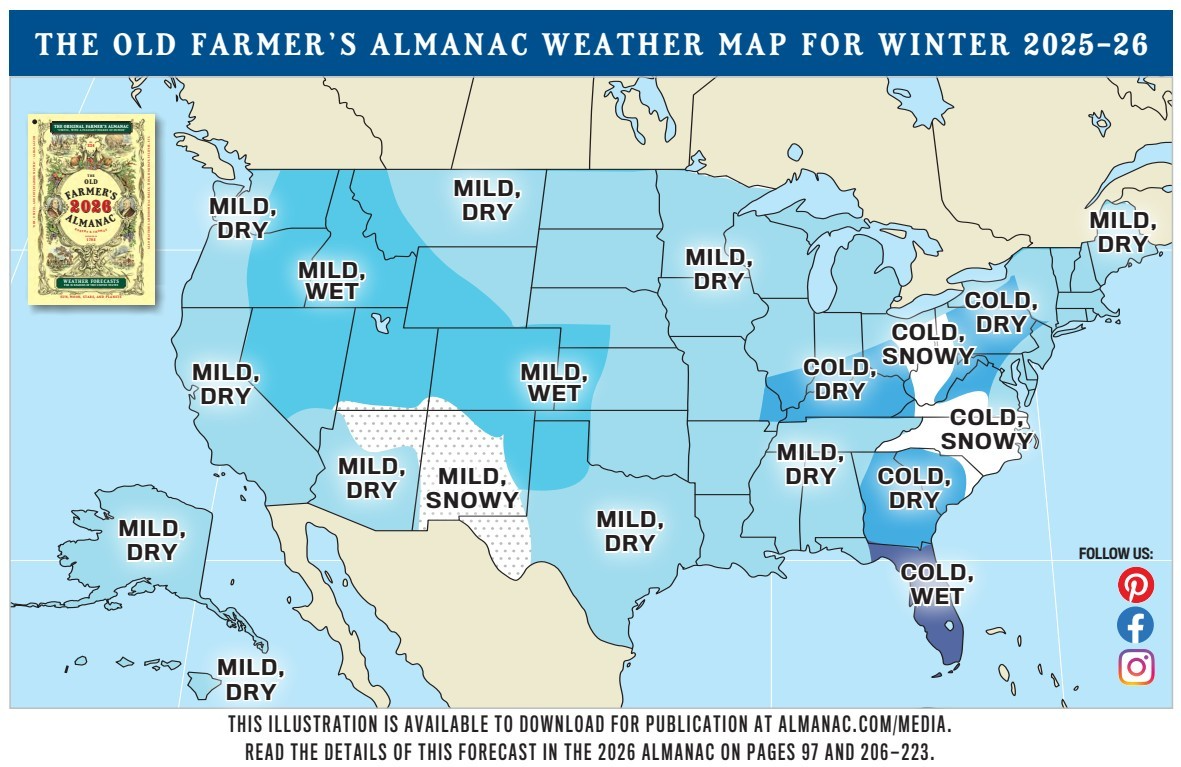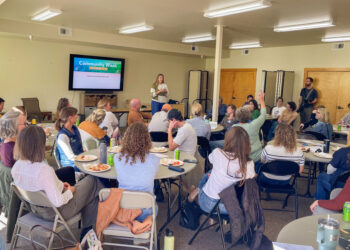Opening day may be two months away, but that can’t stop us from daydreaming about arcing turns down Lone Mountain.
By Mario Carr EBS CONTRIBUTOR
Signs of changing seasons are here and skiers are counting down the days until lifts start spinning. A classic skiers’ pastime of early fall is to look ahead at long-range forecasts, despite how relatively imprecise they tend to be.
The Old Farmer’s Almanac has released its prediction for the 2025-26 winter season, and Big Sky falls in a region labeled “MILD WET”, compared to last year’s map which depicted our area as “MILD DRY.” It’s important to remember that “MILD” and “DRY” are both relative terms, and this prediction last year was coupled with “heavier snowfall in the Rockies,” a prediction that delivered, thankfully. It’s still uncertain whether or not this winter will be an El Niño or a La Niña, although the National Weather Service Climate Prediction Center suggests we can expect a brief period of La Niña conditions—which tend to favor Big Sky and its regional neighbors—as we saw last winter. However, when attempting to predict the future, all one can really do is analyze trends from the past.
“So first of all, everything that we predict, we kind of base it on comparisons to historical averages… We look at 30-year averages of what the weather has been,” Old Farmer’s Almanac editor Joe Bills explained during an interview with EBS.
Bills also added that for an area like Big Sky, a “mild” forecast may actually weigh in favor of powder-hungry skiers.

“If your winter is a few degrees warmer, that means there’s more moisture in the air—it may not mean that you get more snowstorms, but when you do get snowstorms they’ll be a little bit more intense,” Bills said. Plus, Lone Mountain’s high-alpine terrain located north of the 45th parallel can help keep things consistently cold, even during warmer-than-average winters for the rest of the Rockies.
The Lone Mountain SNOTEL provides over 30 years of data. Last year’s “MILD DRY” Almanac prediction resulted in a snow-water equivalent at the Lone Mountain SNOTEL that was roughly 90% of the average for the first half of the season, and roughly 10% above average for the second half of the season.
The weather station recorded a two-foot increase in snow depth in the month of February, and an increase in SWE of 4.3 inches. The shortest month of the year brought last year’s snowpack up to speed, and transformed a lot of good skiing into great skiing for the tail end of the season, despite the SNOTEL recording a decaying base depth through all of April.
Spring powder skiing could be in the cards for 2026.
“One of the notable aspects this year is that, according to what we’re seeing, it looks like winter may go out with a bang for you guys,” Bills said. “As we move sort of out of March and into April, it’s looking like there’s gonna be a pretty good final wallop of snow coming somewhere in that window.”
When compared with the exceptionally dry 2023-24 ski season—which saw less than half the average SWE during the first half of the season, setting at least a 33-year record, and a full-season peak of only 78% SWE—the mostly average 2024-25 ski season felt incredible. But how much better could it really get?
Pictured below is a graph depicting the 34 ski seasons on record at the Lone Mountain SNOTEL, and each peak represents the max SWE recorded that year. Most years, the SWE reaches its peak in late April or early May, and the average peak SWE over the last 34 seasons has been 22.2 inches.


When it comes to predicting the 2025-26 season, only time will tell. One thing is certain, however: last year’s “average” snowpack produced a lot of awesome skiing. But if the Old Farmer’s Almanac’s forecast is as accurate as last year, and the coming winter brings slightly more moisture and more spring-skiing pow days, we could be in for a great season.














